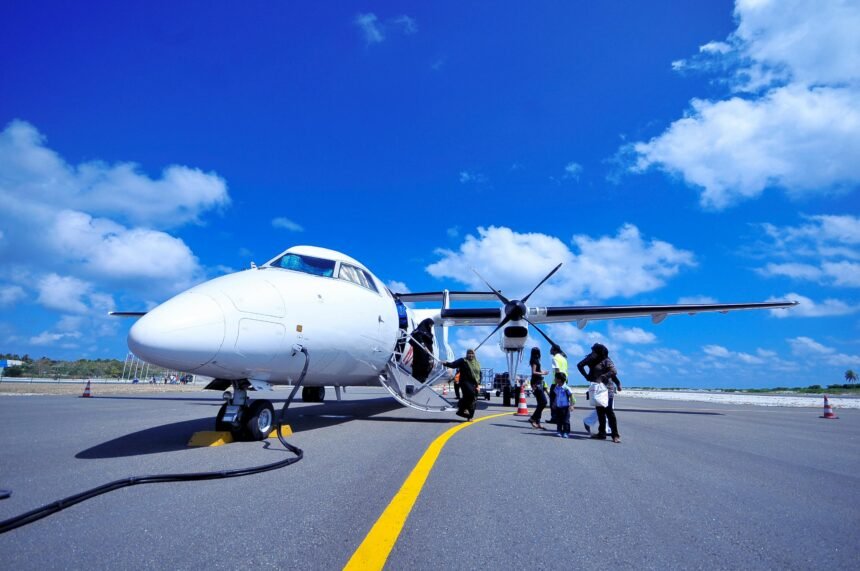Travelers sometimes consider whether a different kind of flight could make a trip feel smoother, while the overall outcome might still depend on many moving parts that are not always visible. It can be useful to look at timing, cabin setup, ground steps, and realistic tradeoffs, since these pieces usually interact in ways that change the experience. A basic review could help you decide if this option fits a particular plan.
Setting expectations about timing control
People often examine private aviation because schedule flexibility appears to remove the friction that usually happens with fixed timetables. Departure and arrival windows can be adjusted around shifting meetings, and aircraft might access airfields that reduce road transfers, although this depends on local conditions and slot rules. You might also request changes closer to takeoff than commercial systems permit, while understanding that aircraft positioning and crew duty limits still apply. This arrangement usually favors itineraries that move frequently, and it could suit travelers who need a margin for unexpected delays. Planning should include realistic buffers, since weather or air traffic procedures could still affect movements. You could consider whether your itinerary has inflexible anchors, because alignment between those anchors and available aircraft times often determines whether the supposed time savings actually appear.
Cabin conditions and in-flight privacy
Another factor relates to the onboard environment, which might feel calmer because the passenger group is small and the seating layout can be matched to the people traveling. Work materials can remain close by, and conversations may continue without the ambient interruptions that usually occur in crowded cabins. This may help when preparation during the flight is needed, or when rest is a priority before an event. Food, devices, and storage can be handled with fewer pauses, while service is often organized around a specific plan agreed in advance. You may find that sensitive items are easier to manage because handoffs are limited. Safety procedures still govern the experience, and that part usually remains consistent with aviation standards. Overall, the focus tends to be predictability rather than a showy presentation, which can make the time onboard feel straightforward and task oriented.
Route planning and airport access
Planning the path from origin to destination usually looks different because smaller airports can become practical choices that bring the aircraft closer to the final address. Adjustments might be made when locations change, and the schedule could be moved forward or backward within workable limits set by regulations and crew rest. For example, Paramount Business Jets can coordinate aircraft selection and routing to meet time-sensitive requirements, and to support busy schedules. Private jet rentals consider runway length, range, and weather, since these factors often decide which aircraft can safely operate a given leg. When several small airfields are available, comparing ground time from each field to the venue usually clarifies the most practical option. Results vary by region, season, and traffic volume, so expectations should remain cautious.
Ground procedures and total trip time
Time spent before and after flying might be shorter because processing at private facilities usually involves fewer people and fewer steps. Security screening still occurs, yet the flow is simple, and luggage usually stays near the passengers. Boarding may begin soon after arrival at the terminal, and the path to ground transport at the destination can be direct. This setup could reduce the waiting that often accumulates inside large hubs. Customs and immigration, when relevant, may be arranged in ways that limit queuing, although rules still apply, and identification checks remain. The result is that total journey duration often depends less on the airborne segment and more on the minimized transitions at both ends. You could review local procedures in advance, because certain airports have specific requirements that add minutes, and planning for those variations usually avoids last-minute surprises.
Evaluating use cases and budget fit
Suitability often depends on purpose, group size, and the importance of reaching a location that commercial routes do not serve conveniently. Business teams with tight connections, families coordinating multiple stops, and travelers heading to remote areas might find that control over timing and access offsets higher fares. Pricing is influenced by aircraft category, repositioning needs, and peak periods, so realistic comparisons usually consider whether flexibility is essential or optional. You could explore alternatives such as one-way segments, light jets for short distances, or multi-leg structures that combine commercial and private portions, because the structure of the trip often shapes cost more than distance alone. When your schedule is stable and airports are well served, commercial options might align closely with your window. When many variables change, the charter model could provide resilience that becomes materially useful.
Conclusion
A simple claim that a private jet always shortens the path may not capture how schedules, cabin needs, airport choices, and ground processing interact during a real itinerary. The decision could work best when the value of flexibility and proximity is clear, and when constraints like weather or airport rules are considered. You could select this method for trips that require precise coordination, while choosing other arrangements when the same goals are met with less complexity.
Sources
https://traveldreamsmagazine.com/benefits-of-private-jet-travel-privacy-security-and-peace-of-mind/
https://www.sentientsignature.com/how-to-choose-the-right-private-jet-for-your-travel-needs/
https://www.luxurylifestylemag.co.uk/drive-sail-and-fly/top-6-private-jet-travel-benefits/







